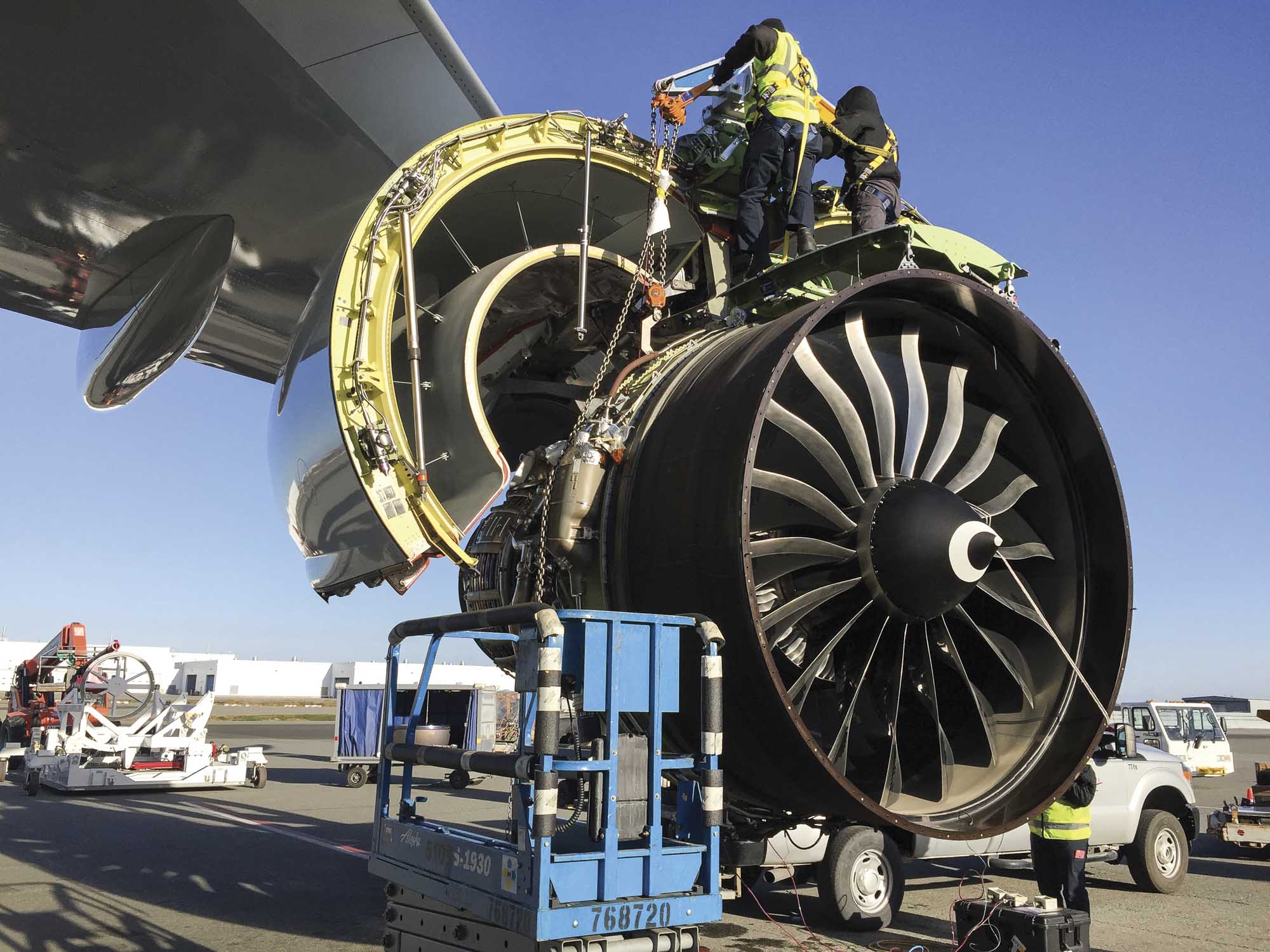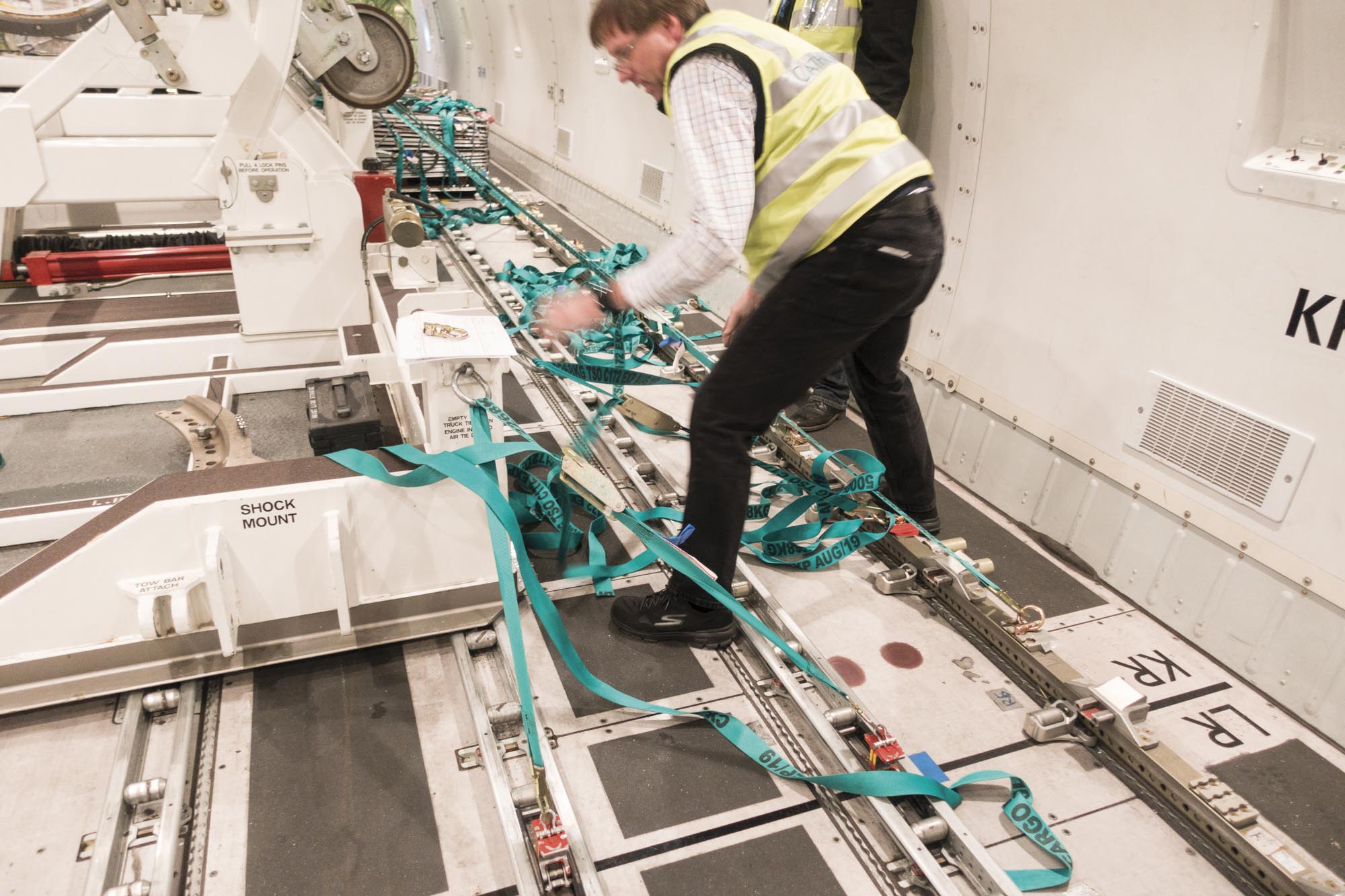It’s 30 degrees. Cathay Pacific cargo manager Kevin Miller describes it as ‘balmy’ or ‘shirt-sleeve weather’. But it’s November and this is Anchorage in Alaska, the US’s northernmost state that sits between Canada and the indeterminate frozen northern polar wastes. They measure temperatures in Fahrenheit here, so it’s two below and Kevin is nonchalantly chiselling ice off the windscreen of the airfield car before a tour of the ramp at Ted Stevens International Airport.
Of course, -2oC is just a taster. Come the depths of winter, it’ll get colder, much snow will fall, winds will howl – and on days with 20 hours of darkness. It can be a hostile place. ‘Yes,’ agrees duty manager Aaron Freeman, ‘but it’s all worth it for the summer – 20 hours of daylight, beautiful scenery and the outdoor life and a nice steady 70 degrees.’
Irrespective of the season and its remote location, Anchorage underpins Cathay Pacific’s transpacific freighter services. Around 70 freighters touch down here each week. It’s a vital pivot for the operation – and for other carriers too. Miller says: ‘There are around 1,700 freighter movements a week here altogether.’
But why? Simply its location, as vice-president cargo, Americas, Fred Ruggiero explains. ‘We could fly our aircraft from North America to Hong Kong non-stop but it’s a long way and with the fuel required we wouldn’t be able to carry the full payload. The stop means we split time and distance so that we can refuel – and load more freight too.’
Refuelling used to be an issue for passenger aircraft too. Miller says: ‘Back in the 1980s, if you lived in Anchorage you could catch a plane to all points in Asia and Europe. You would look along the north terminal and see the tailfins of almost all the world’s airlines.’
Now modern generation aircraft fly miles overhead and the north terminal is something of a ghost town, with passenger flights handled in the South Terminal. In fact, other than the odd TSA pass office, the only signs of life in the former passenger terminal are in the Cathay Pacific Cargo office on the second floor.
Here a small team manages what is in simple terms a truck-stop for freighters, a roster of ‘tech stops’, much like the ‘splash and dash’ in the pits during a Grand Prix. But there is much more to it than meets the eye, as the hubbub in Cathay Pacific Cargo’s office indicates.

On the wall a screen reflects the status of the operation, showing everything from flight numbers, aircraft registration, ETA and departure times, current timings, to the name of the captains on the inbound and the outbound flights. It’s used not just by the team, but the vendors who provide ramp services, and even the pilots, who can check the status of their flights to see if they can get some more time by the pool in Miami.
Cargo Sales and Service Agent Adebayo Carew, or ‘AC’ as he likes to be known, is sorting out the paperwork that each flight generates and updating the screen. ‘Among other things, I’ll be checking crew names, and whether they require special meals, create briefing sheets so that crew have their next roster, and phoning the hotel to ensure that they’re woken up on time and that the car company drives them to the aircraft at the right time,’ he says. ‘I also prepare a Notocs [notification to captain] that will describe any dangerous goods and where they are on the aircraft.’
And that’s before the customs paperwork and preparing the audits for the departed aircraft. But it’s not just a desk job. AC adds: ‘Our strength is that we can all perform the required functions, from sales, the paperwork, to working on the ramp and the aircraft. We’re a well oiled machine; moving parts in a bigger entity. Our on time performance means revenue, so we all have to be working to the same beat.’
As if to prove the point, his phone rings. It’s a local forwarder keen to secure space for 2,000kg of geoducks. The large clams are a delicacy in Asia and are fished a few hours away in Ketchikan. ‘I don’t know anyone who eats them around here, but this where they come from,’ he says, tapping out the order confirmation.
But it’s out on the ramp where the action is. The parking areas for incoming freighters are remote from terminal buildings so that they can park and taxi away without the need to be pushed back. A simple tech stop should take no more than an hour, as Miller explains. ‘There is a lot that happens – it’s more than kicking the tyres and checking the oil,’ he says. ‘We do a walk around the cargo deck to make sure nothing has shifted, check the paperwork, give water to animals or add dry ice to temperature-controlled containers, and engineers carry out a basic service. The crew swaps here, and they are very limited in terms of their duty times, so one little incident can derail this process.’
Today, the ‘one little incident’ is the weather. It’s cold and some snow is starting to settle on the ground, and more significantly the aircraft wings, freezing fast because of the ultra-cold fuel in the tanks. Miller adds: ‘Snow on the runway starts to affect the take-off performance of the aircraft, and we need to de-ice aircraft, but still in the same hour.’
Today it’s light snow so there won’t be the need to offload cargo. ‘Then we would need to get a crew to unload pallets and put them on the next available flight,’ says Miller. ‘We have some storage space here including a cool room and freezer. Obviously, we will try to steer away from bumping temperature-sensitive goods, but then we also have to minimise load times so we don’t delay the flight. It’s a balancing act.’

The day’s other balancing act does involve the loading team. A few weeks previously, a new Boeing 747-8F arrived with a technical problem that necessitated a warranty engine change. Not an easy undertaking, as engineering manager Marty Smith explains: ‘The hangars here are not big enough to take the aircraft.’
Working outside is not ideal, not here, and it took around five days with the engineering team working in shifts behind an ‘igloo’, an inflatable tent, which when wind permits, shelters staff from the elements. ‘Unlike the time we had to replace the wiring on a broken tail light suspended on an exposed cherry-picker – I almost froze to death’. But it’s still a complex undertaking, a balance of heavy engine and intricate connections.
Now the six-tonne engine frame needs to go back to Hong Kong. It’s an outsized piece, and wider than the standard pallets. It has to be locked and then lashed in an area at the centre of the aircraft for balance and because the complex floor of rails, bearings and clips has the necessary pop-up locks for the cargo-straps to secure it. Duty manager Aaron Freeman adds: ‘And the regulations dictate that we have to have a certain amount of pallet positions fore and aft of it in the unlikely event of it working loose.’
Freeman has been in touch with Cathay Pacific’s load control team in Hong Kong, who prepare the load plans to maintain the best aircraft trim while minimising the moves required to get the six-tonne frame in and cargo reloaded quickly. But securing the mesh of straps correctly to the plan takes a good 30 minutes of everyone mucking in.
The next day, duty manager May So has had a busy but normal morning, having started her shift at 4am. Born in Hong Kong, she’s been here long enough to marry a local – ‘my kids are Alaskan’ – and eschew the high heels of city life. ‘I haven’t worn them for 15 years now,’ she says. She now spends her free time kayaking and enjoying the (very) great outdoors.
She’s had the opportunity to catch up with all the night’s paperwork, with the only excitement being a message from an incoming pilot saying he was opening the last coffee pack. A long flight without coffee would not fly, so caterers have been asked to add extra to the consignment to be loaded when the aircraft arrives. It’s all a far cry from when she was on duty and high winds shut the airport and aircraft were diverted to Fairbanks – ‘that’s eight hours by car,’ she says. ‘The whole operation got shifted. It’s a 45-minute flight away. We have GHAs there, but it’s small so with all the flights going in it’s first come, first served. That makes it quite interesting. We got the last seats to get our engineer and flight crew out there.’
Even in another part of Alaska, this team keeps the cogs turning. ‘That was fun,’ she recalls. ‘That’s what’s good about the job: it’s exciting.’








